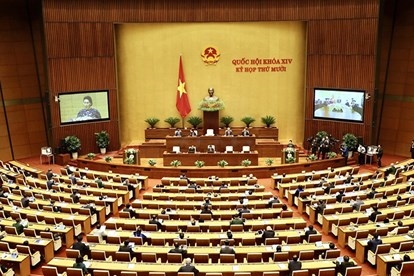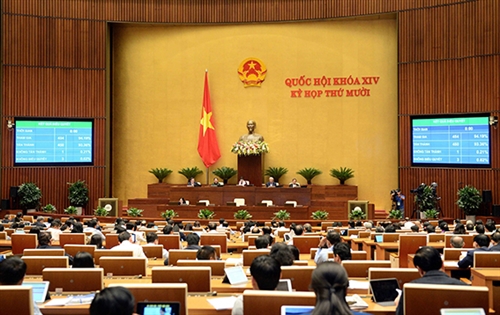Based on internationally recognized statistical principles and methods and taking into account the computability of statistical indicators proposed by ministries and sectors as well as practical experiences of other countries, the Revised Law aims to ensure timely provision of information reflecting the implementation of Vietnam’s international commitments in the new period, in addition to statistical data and information serving direction and administration work.
The Revised Law amends two articles of and replaces the Appendix to the 2015 Law with a new one.
Two revised articles
The process of compilation of the indicators of Gross Domestic Product (GDP) and Gross Regional Domestic Product (GRDP) is added to Article 17.6 of the 2015 Law. Specifically, the Minister of Planning and Investment will, in collaboration with related authorities, take the main responsibility for formulating this process and submitting it to the Government for promulgation. Besides, once every five years, they have to review the scale of GDP and report it to the Government for submission to the National Assembly for considering and deciding on re-evaluation of this scale. This new provision is in line with international practices and Vietnam’s practice.
As per the competence to disclose statistical information, Article 48.2.d of the 2015 Law is added with a provision saying that before disclosing statistical information relevant to provincial-level statistical indicators that belong to subdivisions of the national statistical indicators, heads of provincial-level statistics offices are required to reach agreement in terms of professional operations with the central statistics office.
New List of national statistical indicators
The List of national statistical indicators issued together with the 2015 Law is replaced with a new one provided in the Appendix to the Revised Law. Such replacement is made in pursuance to Article 18 of the 2015 Law which stipulates: “Based on socio-economic development tasks, requirements for state management and international integration in each period, the Government shall review and propose the National Assembly to revise the List of national statistical indicators according to the fast-track procedures”.
The purpose of the revision of this List is to create a legal basis for prompt collection and summarization of statistical information, ensuring objectivity, accuracy, timeliness, completeness and consistency of such information to serve the shaping of policies and administration of socio-economic development by the Party and the State.
The new List consists of 230 indicators arranged in 21 groups. Noticeably, the new List has been updated with statistical indicators reflecting international integration relations in line with Vietnam’s international commitments. These include 10 global gender indicators; 33 global sustainable development indicators; 29 ASEAN statistical indicators; five indicators of global information and communications technology; and three global innovation indicators of the World Intellectual Property Organization.
Compared to the List issued together with the 2015 Law, the new List keeps 129 indicators intact, renames 43 indicators, adds 58 indicators, and removes 14 indicators.-
| Groups of indicators | Number of indicators |
|---|---|
|
1. Land and population 2. Labor, employment and gender equality 3. Enterprises and economic, administrative and non-business establishments 4. Investment and construction 5. National accounts 6. Public finance 7. Currency, insurance and securities 8. Agriculture, forestry and fisheries 9. Industry 10. Trade and services 11. Price index 12. Transport 13. Information technology, post and telecommunications, and communications 14. Science and technology 15. Education 16. Health and healthcare 17. Culture, sports and tourism 18. Inhabitants’ living standards 19. Social order and safety 20. Justice 21. Environmental protection |
15 13 6 9 17 10 24 14 8 10 9 10 21 6 7 10 9 10 5 6 11 |









